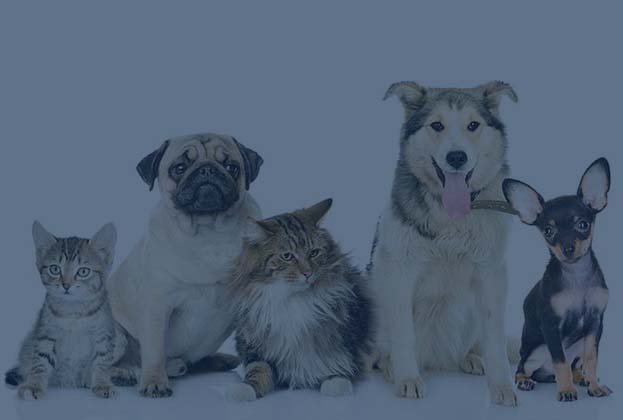
Are you able to read your pets as well as they read you? Can you tell if your pets are happy, sad, aggressive, scared, bored or in pain by the position of their mouths, tails, or just the regularity of their breath? The more time you spend with your pet, the better you will get at reading the cues. Here are some common, although not universal, tips for understanding your pets through their body language.
Tails
A lot of animal-animal and animal-human communication can happen through the way an animal holds its tail. It is commonly assumed that a dog that is wagging its tail is happy. However, that is not always the case. An upright tail or curled tail held away from the body could signal dominance and even aggression. A relaxed dog usually lets its tail droop away from its body, while a submissive or scared dog tucks its tail between its legs and flattens its ears. Some breeds have tails that curl naturally curl, so these signals need to be read in context of the situation.
Cats, on the contrary, hold their tails up straight when they are happy or feeling friendly. A twitchy tail indicates agitation and anger, while a puffed out tail signals fright. However, cats reveal fear the same way as dogs – by holding their tails between their legs.
Mouth
If your dog’s lips are pulled back and it shows his/her teeth, the signal is pretty difficult to misread. S/he means business. Stay away. If the mouth is hung open and tongue lolled out, it means your pet is relaxed and it is safe to approach him/her. If the mouth is shut tight, it could be a sign that s/he is tense. Cats, on the other hand, will keep his/her mouth elegantly shut when s/he is relaxed.
Body Position
Animals’ body posture send out very clear signals about their state of mind. Alpha dogs that wish to establish dominance will stand over another dog, with stiff ears and a raised tail. A meek dog will display the opposite signs, making itself look smaller and drooping its ears and tail. A dog that is not interested in posturing is usually relaxed and contented.
Similarly, a cat that is lying down is content, but if the lazy posture is accompanied by a growl, it means s/he is alert to an attack. A cat with an arched back wants to be petted, but if the fur is standing on end, it means s/he is terrified or angry and petting can wait.
Humans have been altering the appearances of animals through selective breeding and cosmetic surgery to suit their tastes; however, these changes could cause miscommunication among animals. By spending more time with animals, you will understand them better and this closer bonding could do more for both of you than simply preventing a nip at the ankles.

